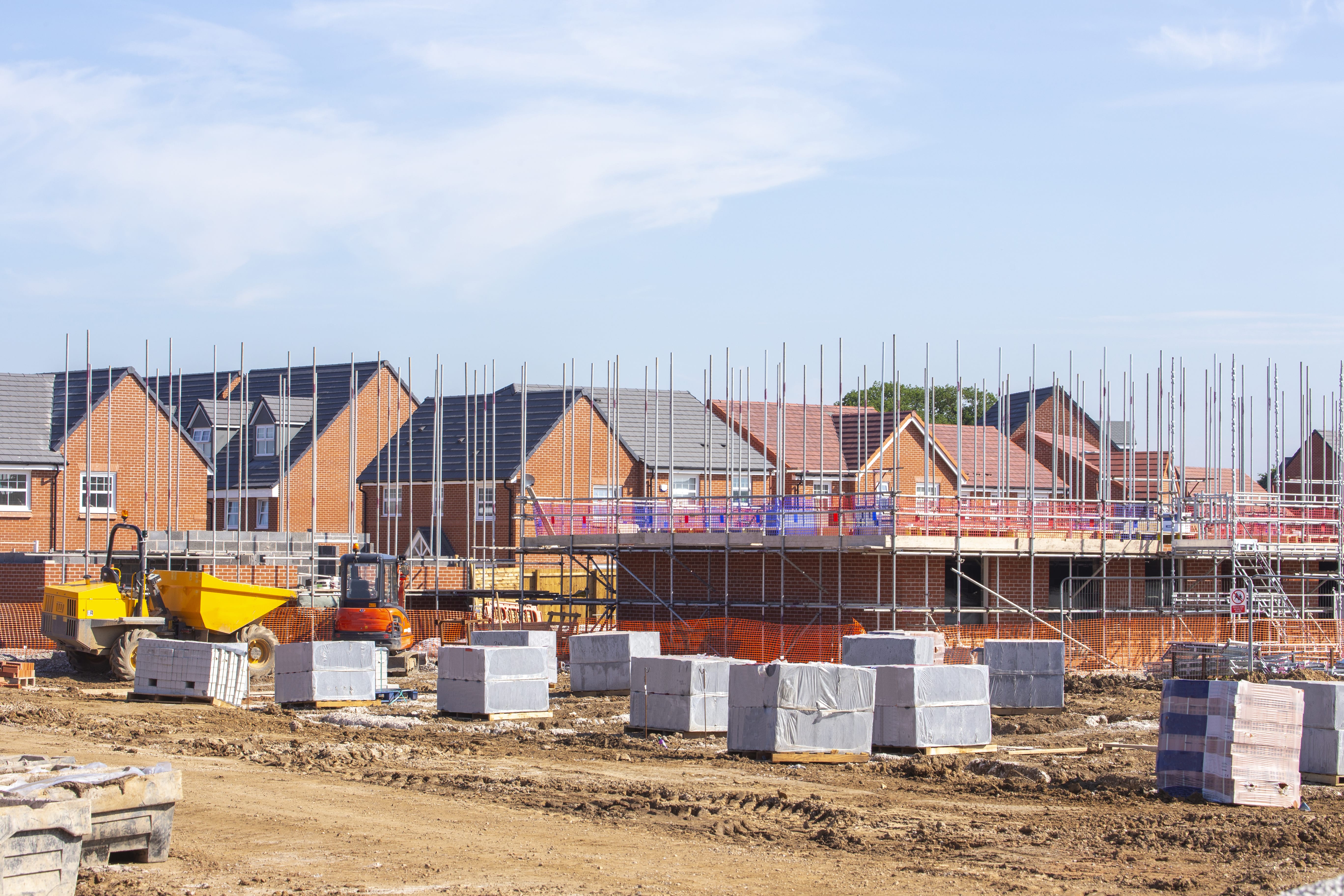It’s obvious there’s a severe housing shortage after yet another year of slower than necessary development in Wales, where only 37% of the new dwellings required were completed. Could entrepreneurial first-time developers help solve the problem?
New builds coming onto the market alone are not enough to address the supply and demand imbalance. But with interest rates now at their highest since 2008, affecting lending for both builders and property buyers, there are opportunities for a new generation of property developers in 2023 to enter the market.
According to research commissioned by the Welsh Government, it estimates that to meet the housing needs of Wales more than 14,000 new homes are needed every year for the next 15 years. This is in addition to existing unmet needs and far in excess of current levels of supply. According to the Wales.Gov website only 5,273 dwellings were completed in 2022.
When it comes to property development in Wales – the sector seems to have a superpower all of its very own and that is to defy the economic, regulatory and legislative challenges year after year.
Three consecutive months of house price growth in 2023 has given developers new found optimism. The construction sites in Wales are busy, and the telltale sign of groundworkers on site means the major house builders are confident schedules will continue – for the next 3 months at least.
The build to rent (BTR) sector is just getting going with companies like Legal & General creating 715 new homes in Cardiff, the biggest BTR scheme in Wales to date following the success of their 318 BTR apartments in Central Square. Aside from new builds, the upbeat optimism also extends to bringing old properties back into the market via refurbishment and renovation.
A recent survey of more than 1000 of property investors by Finbri, a bridging finance company, found whilst 45% were looking to invest in property in 2023, Wales was disproportionately underrepresented when it came to bridging old properties back into the market through ‘property flips’. Just 5.49% of property flips occurred in Wales compared to the neighbouring West Midlands where 17.48% properties were renovated and resold.
Refurbishing and renovating clearly can put valuable housing stock back into circulation.
If more developers and property investors were ready and willing to take on the challenge, it seems that the Welsh market will sustain more new construction, whether it be ‘build to rent’ or for sale, as well as bridging older properties back into use via conversion, restoration or renovation.
In other words, if you’re ready to join the 2.5 million other UK property investors and start grabbing a piece of a market that has generated stable profits for the past 20 years, now might be your time.
Property development has great appeal if you’re trying to get a solid return on your investment because demand from potential homeowners and property investors continues to surpass supply. And if you’re willing to take a chance, investing in real estate will offer you two clear benefits.
Firstly capital appreciation: Over time, the value of your property holdings increases. You can eventually earn a sizable monetary gain by selling your properties separately or as an entire portfolio. But you also don’t necessarily have to wait very long for your capital to appreciate – especially if your property development focus is buying property with a view to making renovations or refurbishment and quickly selling for a profit. This is known as property flipping. Bridging Market’s 2022 survey showed that over 50% of property flippers made between £10K – £50K profit and only 1% actually made a loss.
Secondly income generation: If you choose to keep your home and rent it out, you will receive a consistent income from the tenants. In fact, according to another piece of research by Finbri rent rises affect every part of the UK with some increases at an eye watering 14.6% in the year up to September 2022 – and no, it wasn’t London but Northern Ireland.
But how do you make your first foray into property development?
Possibly the most suitable method to generate a healthy profit margin on your first property development project is to keep it simple.
Taking on a straightforward property development project has several key benefits:
- Most notably, it’s less risky.
- It can still generate a good profit.
- It’s an easier learning curve.
- It’s easier to finance.
- There’s a higher number of opportunities.
- If you’re in a trade, some aspects of the work can be completed by you which reduces your costs.
One of the simplest forms of property development is purchasing a property to renovate, either for sale or to be let out.
First-time property investors are sometimes lured to dilapidated, outdated homes and apartments that are in desperate need of a quick fix and a cosmetic makeover.
This kind of residential property is a great place to start if you’re new to property development because it makes use of your prior home-buying and renovation expertise without requiring specialised understanding of the commercial, storage, office, or student housing markets.
- On a fix and flip, aim to make a good profit margin of at least 20%.
- In the event that the profit margin is insufficient, be ready to walk away.
- Your purchase price determines your initial profit; you have control over how much you pay, and the market determines your sale price.
Advice from experts for novice developers:
Every asset has a “ceiling value” – which is the highest price it may possibly get in an open market sale. Even the priciest fixtures and finishing touches won’t push it above the ceiling.
- Find the next best street or the next emerging neighbourhood instead of purchasing the proverbial worst house on the best street.
- Listen to estate agents: open-plan living areas might increase value more than an addition.
- Decide up front whether you plan to sell or rent out your investment, but explore the alternative so you have a back-up plan if plan A doesn’t work out.
A rental of your investment property
You’ll likely be searching for a buy-to-let mortgage to pay for the purchase unless it requires significant structural renovations if you don’t want to keep the property.
Your development decisions will be influenced by the neighbourhood you purchased in and your anticipated rental income. For example, does this house have enough bedrooms to appeal to families, young professionals, or students?
Just one tenant, a couple or renting to a family
The most common option for new investors is a single lease with a single renter, a couple, or a family.
- Your buy-to-let mortgage, as well as additional administration and maintenance expenses, are covered by your monthly rental income, leaving you with a profit.
- Low management costs, only one tenant relationship to manage, and a good chance that they’ll stay for the long term.
- Your annual profitability is at danger if there are void times when the property is vacant and unoccupied and generates no money.
HMOs – homes of multiple occupants
An alternative option to renting to a single tenant, and a popular option for conversions is an HMO – renting out specific rooms in a home where everyone uses a communal kitchen, living space and bathroom facilities.
- Individually negotiated leases.
- Possibility of significantly higher monthly rental income – but at a larger cost for management and upkeep.
- Even higher profitability is possible with a large HMO that rents to five or more separate tenants (with extra management duties) but organising the required upgrades and repairs can be more difficult.
- Even if the home isn’t entirely occupied, you’ll still get some rental money if you have an HMO or Large HMO.
- There’s also stricter planning for HMOs so check out your local authorities requirements before starting a project!
You can also sell the property after renovation
If you want to sell the property after you’ve renovated it, long-term mortgage funding isn’t the best option. Early repayment fees (ERFs) may wipe out a large portion of your profit if you pay off your mortgage early.
You’ll be searching for short-term capital, often known as bridge financing or bridging loans, which may be paid back whenever you like – as soon as your projects are finished.
Critical components to your success – here are the three key phases.
In order to become a successful developer, you need to get to grips with three key phases:
- Sourcing, feasibility and planning.
- Financing and exit strategy.
- Construction, scheduling and project management.
Sourcing, feasibility and planning.
Aim to find the best deal when looking for a house, think critically and honestly about its potential. Conduct thorough market research on local house price ceilings, rental rates, up and coming areas – get to know the area you’re considering investing in. Better yet – stick to an area you know well. Don’t buy the worst house on the best street but instead look for the adjacent street that is perhaps more affordable to you, and your prospective buyer or renter.
The following step is feasibility, this is when you assess how financially and practically feasible your project is. It’s worthwhile checking the feasibility of a few theoretical projects so when you spot an opportunity, you’ll have the financials to hand to move quickly. You’ll need to set budgets for each part of the development project and then work out how to finance it. Answer questions like how much is, and how will you finance:
- Surveyors reports, architect and planning costs
- Deposit costs for the purchase of the property
- Mortgage finance costs or bridging finance costs for the rest of the purchase price
- Stamp duty costs and conveyancing fees
- Construction costs (How much on trades, materials, scaffolding, cranes or cherry pickers etc.).
- Whether you’re selling or renting your property will likely benefit financially from ‘dressing’ the property with at least basic furnishings.
- If your exit is a sale, then factor in estate agent fees, another round of legal fees and work out what personal tax you’ll end up paying so there’s no nasty HMRC surprises.
- If your exit is the rental market, then factor in letting agent fees if you’re not accustomed to being a landlord.
A word of advice, there are advantages and disadvantages in terms of tax planning from buying a property as an individual or as a property development company. Getting it right from the outset is smart, but the right choice for you completely depends on your individual circumstances. Seeking advice from a financial professional such as a financial advisor or accountant who knows both the current tax and cost implications for each approach will be time and money well spent.
Financing and exit strategy:
High street banks frequently aren’t set up to fund this kind of project because their lending standards won’t be as flexible as those of private and specialised lenders, and you’ll likely be charged much higher interest rates.
A good finance broker will be able to look at all of your possibilities, even private banks that are closed to direct borrower approaches, and find you the best loan options for your needs.
You may require a mixture of financial sources for your renovation project depending on the complexity of works required and the amount of deposit you have.
This could range from a buy-to-let mortgage, bridging finance, development finance or second charges to raise capital.
If you need to raise finance, it’s important to get to grips with the different options of financing. Speaking to a reputable broker will quickly give you an understanding of what kind of funding you can obtain, how much that funding will cost and the general lending criteria you’ll need to meet. You can find a good selection of reputable bridge finance brokers and lenders on the Association of Bridging Loan Brokers & Lenders’ directory.
For any financing you’ll also need an exit strategy. That’s the process for recovering your investment and realising your profit. Your exit will be based on either selling the property or continuing to rent it out and possibly repay the original finance with a longer term mortgage.
Construction, scheduling and project management.
Finally, you’ll need to manage the construction process and ensure it’s completed on schedule. Be acutely aware that any over-run will increase the cost of any financing you have budgeted for. Will you hire a principal contractor to manage the trades? Will it be a project manager or will you manage the works yourself? The scale of the project and your trade expertise will likely answer this question. In short, avoid biting off more than you can chew. With all options – development projects require careful planning and project management in order to keep costs within budget.
You must plan your development project – every last detail. Which trades will you require, will the trades overlap at anypoint causing scheduling problems on site? Can you upskill yourself to cover any easy trades? Determine how long each type of project would take by breaking it down into a schedule.
By taking these steps into account when setting up your property development project, you can create an effective strategy for helping Wales meet that missing 62.34% of housing stick that’s so urgently needed.








Leave a Reply
View Comments